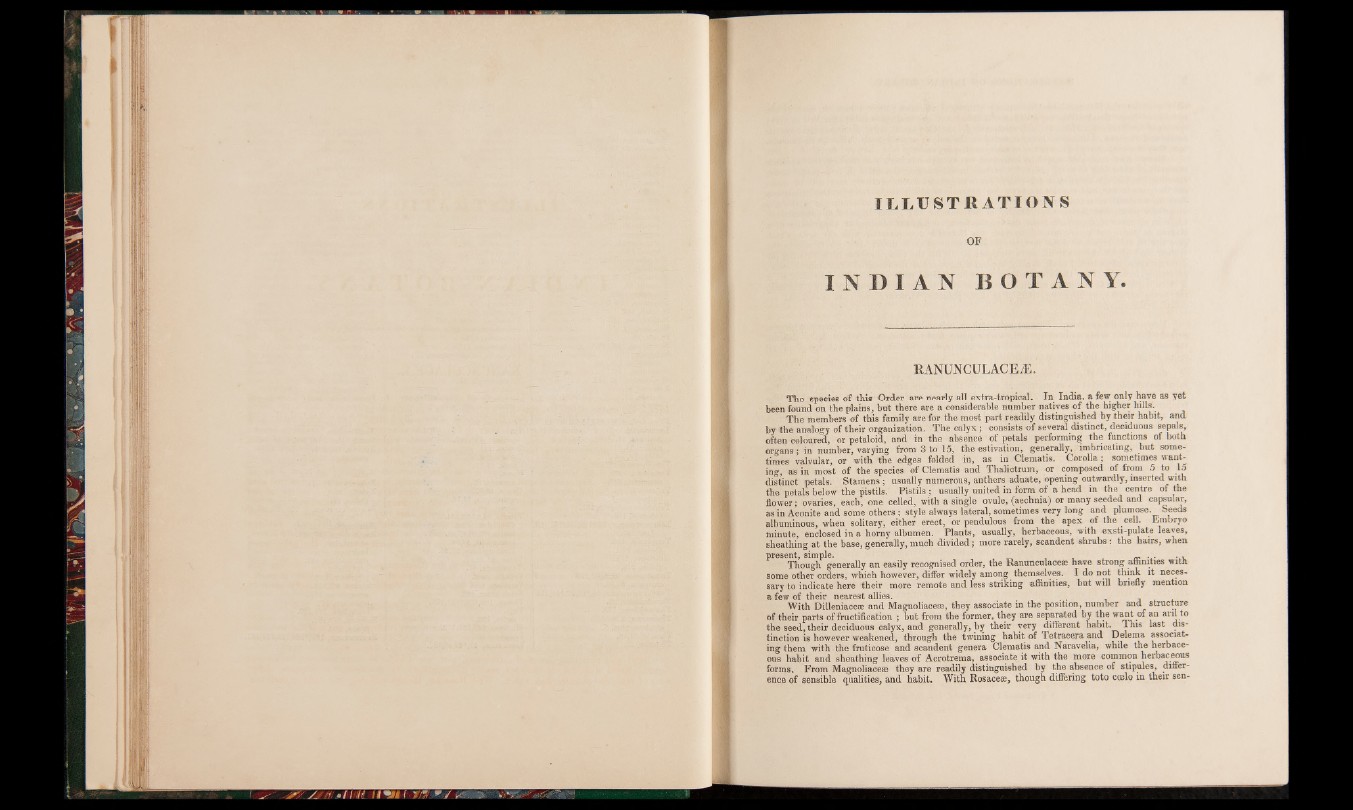
ILLUSTRATIONS
OF
I N D I A N B O T A N Y .
RÀNUNCULACEÆ.
The species of this Order are nearly all extra-tropical. In India, a few only have as yet
been found on the plains, but there are a considerable number natives of the higher hills.
The members of this family are for the most part readily distinguished by their habit, and
by the analogy of their organization. The calyx ; consists of several distinct, deciduous sepals,
often coloured, or petaloid, and in the absence of petals performing the functions of both
organs; in number, varying from 3 to 15, the estivation, generally, imbricating, but sometimes
valvular, or with the edges folded in, as in Clematis. Corolla; sometimes wanting,
as in most of the species of Clematis and Thalictrum, or composed of from 5 to 15
distinct petals. Stamens; usually numerous, anthers adnate, opening outwardly, inserted with
the petals below the pistils. Pistils ; usually united in form of a head in the centre of the
flower; ovaries, each, one celled, with a single ovule, (aechnia) or many seeded and capsular,
as in Aconite and some others ; style always lateral, sometimes very long and plumose. Seeds
albuminous, when solitary, either erect, or pendulous from the apex of the cell. Embryo
minute, enclosed in a horny albumen. Plants, usually, herbaceous, with exsti-pulate leaves,
present, simple. . ,
Though generally an easily recognised order, the Ranunculacese have strong affinities with
some other orders, which however, differ widely among themselves. I do not think it necessary
to indicate here their more remote and less striking affinities, but will briefly mention
a few of their nearest allies.
With Dilleniaceae and Magnoliace®, they associate in the position, number and structure
of their parts of fructification ; but from the former, they are separated by the want of an aril to
the seed, their deciduous calyx, and generally, by their very different habit. This last distinction
is however weakened, through the twining habit of Tetracera and Delema associating
them with the fruticose and scandent genera Clematis and Naravelia, while the herbaceous
habit and sheathing leaves of Acrotrema, associate it with the more common herbaceous
forms. From Magnoliace® they are readily distinguished by the absence of stipules, difference
of sensible qualities, and habit. With Rosace®, though differing toto coelo in their sen